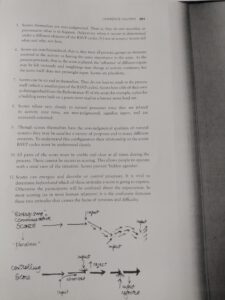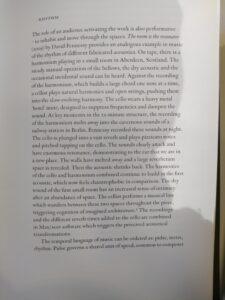Sprint 2 Play_Reflection
On the first day class of this theme, each group was assigned a game and we were instructed to complete it. Our group’s game was about walking, so we left the classroom and found a larger space to play. At first, everyone didn’t quite understand the instructions of the game, after constant discussions and revisions, we came to generally accepted instructions. In the game, each person was given a speed when walking from one point to another, 0 is very fast and 9 is very slow. When each person stopped at one point, we were also be given a staying time, 0 is no time at all and 9 is a very long time. The scene was actually hilarious because everyone was walking at different speeds at the same time, while someone stopped at a point for a long time.

However, there were still parts of this game that we didn’t understand, such as how to give random numbers, how to end the game, and how fast and how long it should take of each number. Suppose there were two people walking at a speed of 0, and their pace and speed could not be totally the same. Similarly, if the two people’s staying time were both 9, the duration of their silent counting would also be different. Even if there were rules of the game, it was difficult for us to unify the details of the game. Because everyone had a different way of thinking as an individual, we had different concepts of speed and time. If we’re going to play this game more rigorously, maybe we should count the time with a watch or a mobile phone, but it may lose the joy in the game.




In class assignments, each group was assigned a different reading, and our group read Play and Participation in Contemporary Arts Practices. I have compiled what I think are the main points of the content of the first chapter. This book analyzes ludic participation, in which play and games are used organizationally so that participants actively engage with or complete the work of art through their play. The author considers people should rethink the current significance of the changeable relation between play and art, and we require a method of criticism that can least of all describe its organizational complexity and systematicity.
Since the 1960s an increasing number of works of art have invited unknown others to participate in a way hitherto impossible or illegitimate or both. This changing constitutes the most significant development in current artistic practice, reorganizing the correlation of art object, artist and audience, and thus requiring a revision of how works of art are to be analyzed and evaluated. The author has a saying that I am very impressed with, “The artist is now a col-laborator in the production of situations rather than the sole producer of dis-crete objects, the work of art is an open process rather than a finite, portable commodity, and those who were previously viewers are now participants.”
Play can be divided into two traditions, humanist and posthumanist. Humanism is a human-centered ideology, most of which are based on the embodiment of respect for human nature. Although there is no clear and conclusive definition of humanism in various fields of discourse, there are several ways to define it. When people define humanism, they use the way of consensus definition. Humanism is in most cases a philosophical and moral worldview, which should be embodied in the recognition and respect of the value of human existence and human behavior. On the one hand, there is a humanist argument for play, for which play constitutes a gain in agency for an individual or a group and allows players to take pleasure in mastery, if only within the magic circle of their play. On the other hand, there is a posthumanist argument, for which the player is as much plaything as master of her play. In this case, to be in play is to be played. The humanist argument understands play as a voluntary, intentional, or internally motivated activity, and often advocates play as the optimal achievement of a human agent. Posthumanist emphasizes the necessity of embodied and contingent relations between humans and machines. In this view, subjectivity emerges from such relations and cannot be separated from them.
In the fourth week of class, each group needed to think together and create a score. Our group’s original idea is similar to walking, following a series of instructions in a library. With the emergence of electronic books and the popularization of the Internet, modern people lack of reading is a common phenomenon. Moreover, the fast-paced life of modern people makes it difficult to find a quiet and leisurely mood to read. Most people are busy with life, and fewer people can really calm down and read. Originally, there is less leisure time, and naturally fewer people are willing to spend time reading.
https://miro.com/app/board/uXjVPRSD2u0=/

At the end of this class, our group tried the game at the ECA library. Here are my sentences and writing.
A long time ago, people of Lowin town liked to use flowers as decorations. One day, the war came suddenly, and people heard the sound of artillery fire at night. The sound clearly attacked and had enormous resonance, demonstrating to the ear that they are in a critical situation. With frequent wars, enemy soldiers distinguished the residents of Lowin town as soon as they saw the people wearing flowers. These soldiers used this as a judgment to know who to kill and who to aid. Gradually, people of Lowin town dared not wear flowers anymore, and regarded flowers as a symbol of death and ominous. Until now, flowers play almost no role in the decoration, clothing, stories, or poetry of the peoples of Lowin town.



However, we ran into some issues that made it difficult to continue the game. For example, when some books were opened, the first sentence we saw is not English, and it may be any language that we do not understand. And making up a story with three unrelated sentences is harder than we think because some sentences are too academic to fit into a common story. In consequence, our score still has a lot to modify and improve. And my group discussed and decided to use the lisence CC BY on our score. People can copy and redistribute the material in any medium or format and remix, transform, and build upon the material for any purpose, even commercially.




Recent comments